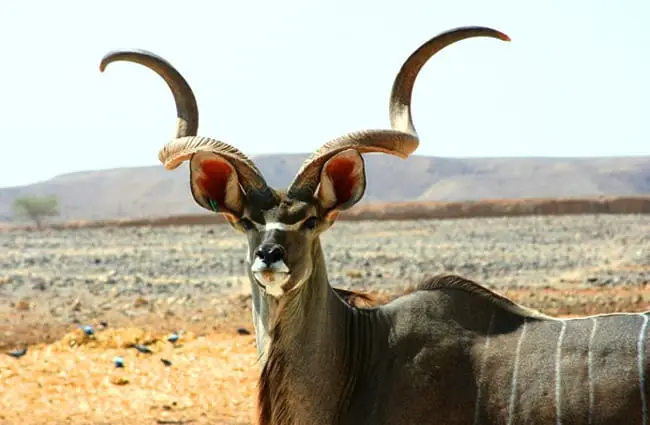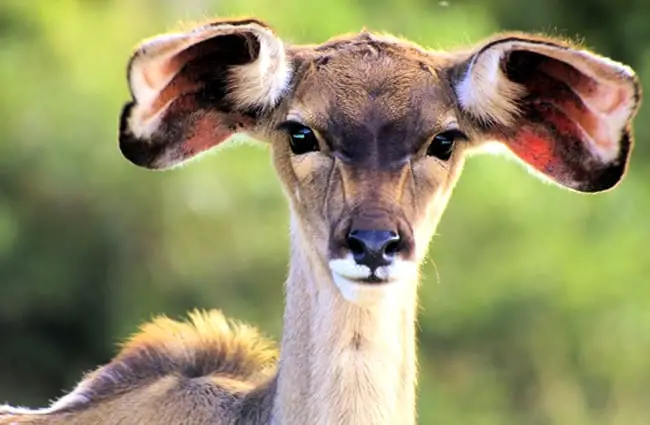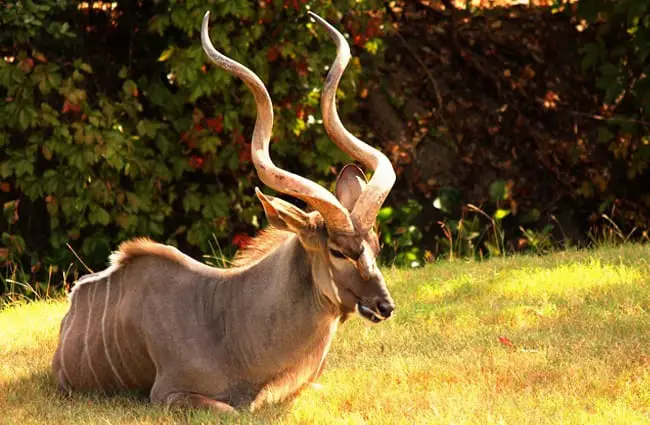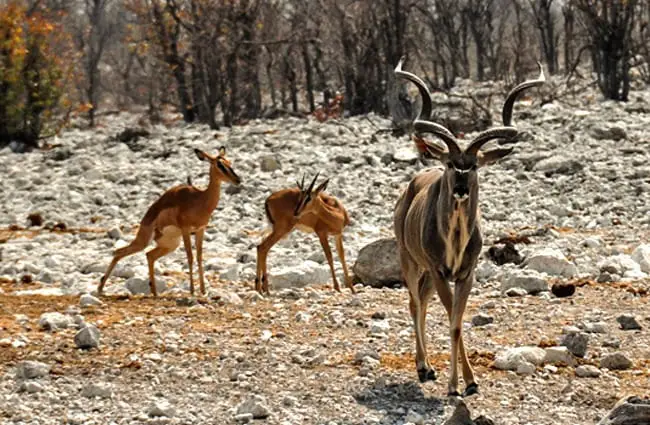The Majestic Kudu: A Comprehensive Guide
The Kudu, a striking antelope native to Africa, embodies the beauty and resilience of its environment. Known for its elegant stature, spiraling horns, and elusive nature, the Kudu captures the imagination of wildlife enthusiasts and plays a vital role in the African ecosystem. This guide delves into the world of the Kudu, covering its biology, behavior, habitat, and interactions with both its environment and humankind.

Kudu Species and Physical Characteristics
There are two primary species of Kudu: the Greater Kudu (Tragelaphus strepsiceros) and the Lesser Kudu (Tragelaphus nyala). The Greater Kudu is considerably larger, standing up to 1.9 meters (6.2 feet) tall at the shoulder and weighing between 120 to 250 kilograms (265 to 550 pounds). Lesser Kudu are smaller, typically weighing between 55 to 85 kilograms (120 to 187 pounds). Both species exhibit a reddish‑brown coat with vertical white stripes, providing excellent camouflage in their woodland habitats.
The most distinctive feature of the Kudu is undoubtedly its horns, found only on males. These horns grow continuously throughout the animal’s life, spiraling impressively and potentially reaching lengths exceeding 1.8 meters (6 feet). The horns aren’t shed and are composed of bone covered in keratin, similar to human fingernails. Horn length and the number of spirals often indicate a male’s age and dominance.
Habitat and Distribution
Kudu are primarily found in eastern and southern Africa. Greater Kudu prefer densely wooded areas, savannahs, and rocky outcrops, needing sufficient vegetation for browsing and water sources. They are adept at navigating challenging terrain and are commonly found in countries such as South Africa, Namibia, Botswana, Zimbabwe, and Kenya. Lesser Kudu are typically found in bushland and woodland habitats, favoring areas with dense thickets for protection. They have a more limited distribution, found mainly in southwestern Africa, including Angola, Namibia, and Botswana.

Diet and Feeding Behavior
Kudu are herbivores, specifically browsers, meaning they feed on leaves, twigs, fruits, and shoots. They have a preference for high‑quality vegetation and are known to carefully select the most nutritious parts of plants. Their long tongues and flexible lips enable them to reach and strip leaves from branches. Kudu are crepuscular feeders, meaning they are most active during dawn and dusk. They often gather at waterholes to drink, making them vulnerable to predators. They obtain most of their water from the plants they consume but will visit water sources when available. During dry seasons, they may dig for roots and tubers to supplement their diet.
Social Behavior and Reproduction
Kudu exhibit variable social behavior. Males are typically solitary or form small bachelor groups. Females and their young live in herds of five to twenty individuals. These herds provide protection and facilitate cooperative rearing of calves. During the mating season, males compete for access to females through impressive displays of strength and ritualistic sparring. A dominant male will establish a territory and attract females.
Gestation lasts approximately seven to eight months, resulting in the birth of a single calf. Calves are born during the rainy season, when food is abundant. The mother will hide her calf in dense vegetation for protection from predators. The calf will nurse for several months, gradually transitioning to browsing alongside its mother. Kudus have a relatively slow reproductive rate, making them vulnerable to population declines.

Kudu and the Ecosystem
Kudu play a crucial role in maintaining the health of their ecosystem. As browsers, they help to shape vegetation structure and influence plant diversity. Their browsing habits can prevent the dominance of certain plant species, promoting a more balanced ecosystem. Kudu also serve as an important prey species for large carnivores, such as lions, leopards, wild dogs, and hyenas. They contribute to the energy flow within the food web. Their presence or absence can influence the population dynamics of both predators and other herbivores.
Kudu Interactions with Humans
Historically, Kudu have been hunted by humans for their meat, hides, and horns. In some areas, they are still targeted for bushmeat, posing a threat to their populations. However, in many regions, Kudus are now protected through conservation efforts and regulated hunting programs. Sustainable hunting can provide economic benefits for local communities while ensuring the long‑term survival of the species.
Kudu are also increasingly popular in captive breeding programs and wildlife ranches. These initiatives contribute to conservation efforts and provide opportunities for ecotourism. Conflicts between humans and Kudu can occur when animals raid crops, leading to retaliatory killings. Effective land management practices and community‑based conservation programs are essential for mitigating these conflicts.

Kudu Evolution and Taxonomy
The evolutionary history of Kudu is rooted in the broader lineage of African antelopes. Fossil evidence suggests that the ancestors of modern Kudu emerged during the Pliocene epoch, several million years ago. Their evolutionary adaptations reflect the challenges of surviving in a diverse and changing environment. The two species, Greater and Lesser Kudu, diverged from a common ancestor relatively recently.
Kudu belong to the family Bovidae, which includes cattle, sheep, goats, and other horned mammals. They are classified within the subfamily Antilopinae, which encompasses a variety of African antelopes. The scientific name for Greater Kudu, Tragelaphus strepsiceros, refers to its spiraled horns (“strepsi” meaning twisted, and “ceros” meaning horn). The Lesser Kudu’s name is Tragelaphus nyala.
Spotting Kudu in the Wild & Safety
If venturing into Kudu habitat, remember they are generally shy and elusive. The best time to spot them is during the early morning or late afternoon, near water sources or in wooded areas. Look for their distinctive vertical stripes and graceful movements. Bring binoculars for a better view.
If you encounter a Kudu, maintain a safe distance. Do not approach or attempt to feed it. Kudu can be unpredictable, especially during the mating season. If a male Kudu displays aggressive behavior (lowering its head, pawing the ground), slowly back away. Report any unusual behavior to local wildlife authorities.

Caring for Kudu in Captivity
For zookeepers and wildlife professionals caring for Kudu, a spacious enclosure that mimics their natural habitat is crucial. This should include a mix of woodland, open grazing areas, and access to water. Providing a varied diet of browse, fruits, and vegetables is essential for maintaining their health. Regular veterinary checkups and parasite control are also important.
Kudu are social animals and should ideally be kept in small herds. Providing enrichment activities, such as puzzle feeders and browse piles, can help to stimulate their natural behaviors. It’s important to minimize stress and maintain a calm environment. Avoid overcrowding and excessive noise. Monitoring their social interactions and identifying any signs of aggression or illness is crucial for ensuring their welfare.

Kudu remains a captivating symbol of African wildlife, embodying the beauty, resilience, and delicate balance of its ecosystem. Through continued conservation efforts and responsible wildlife management, we can ensure that future generations will continue to marvel at this magnificent creature.

![Red Angus Closeup of a beautiful Red Angus cowPhoto by: U.S. Department of Agriculture [pubic domain]https://creativecommons.org/licenses/by/2.0/](https://animals.net/wp-content/uploads/2020/03/Red-Angus-4-238x178.jpg)




![Red Angus Closeup of a beautiful Red Angus cowPhoto by: U.S. Department of Agriculture [pubic domain]https://creativecommons.org/licenses/by/2.0/](https://animals.net/wp-content/uploads/2020/03/Red-Angus-4-100x75.jpg)

